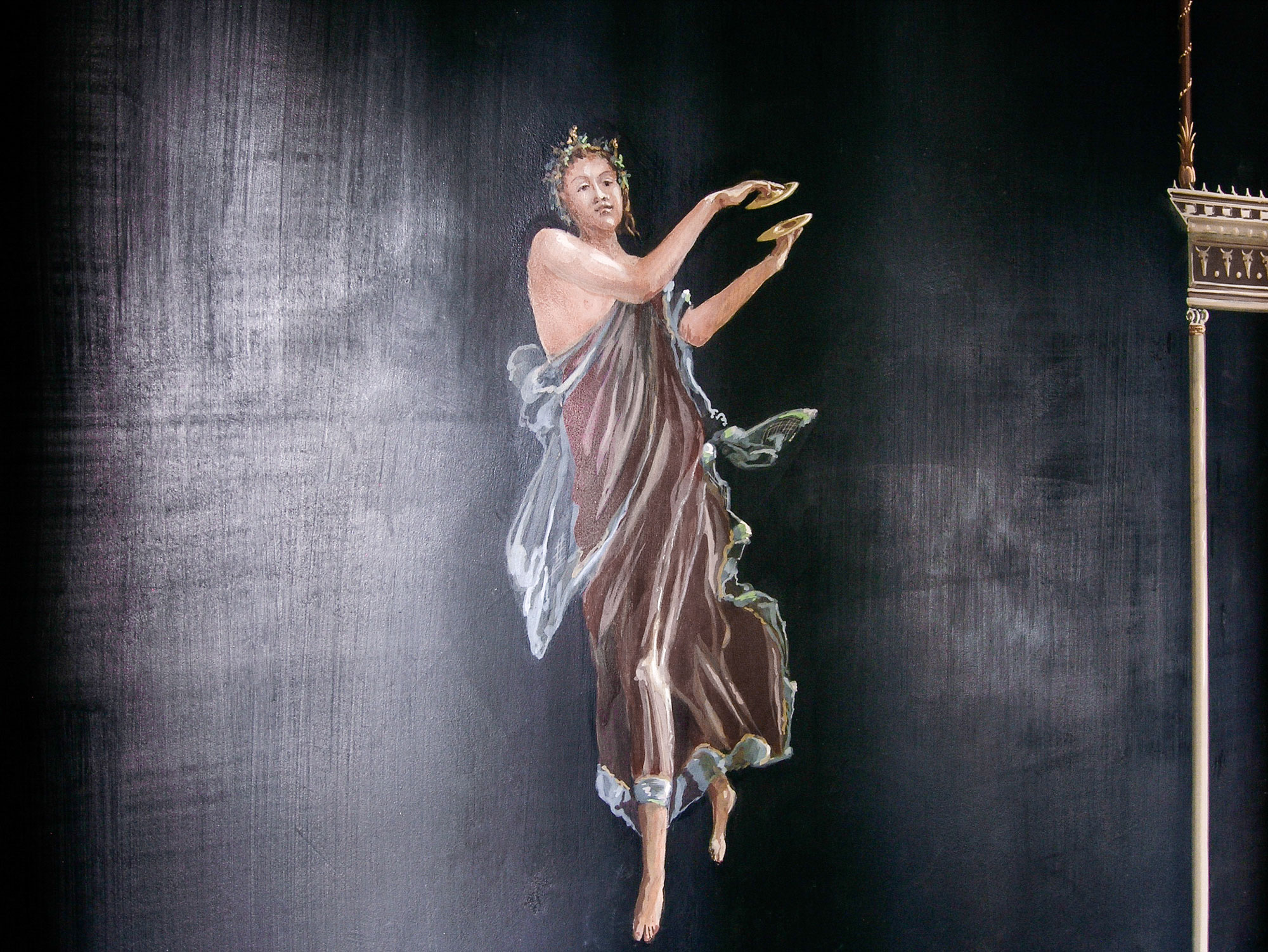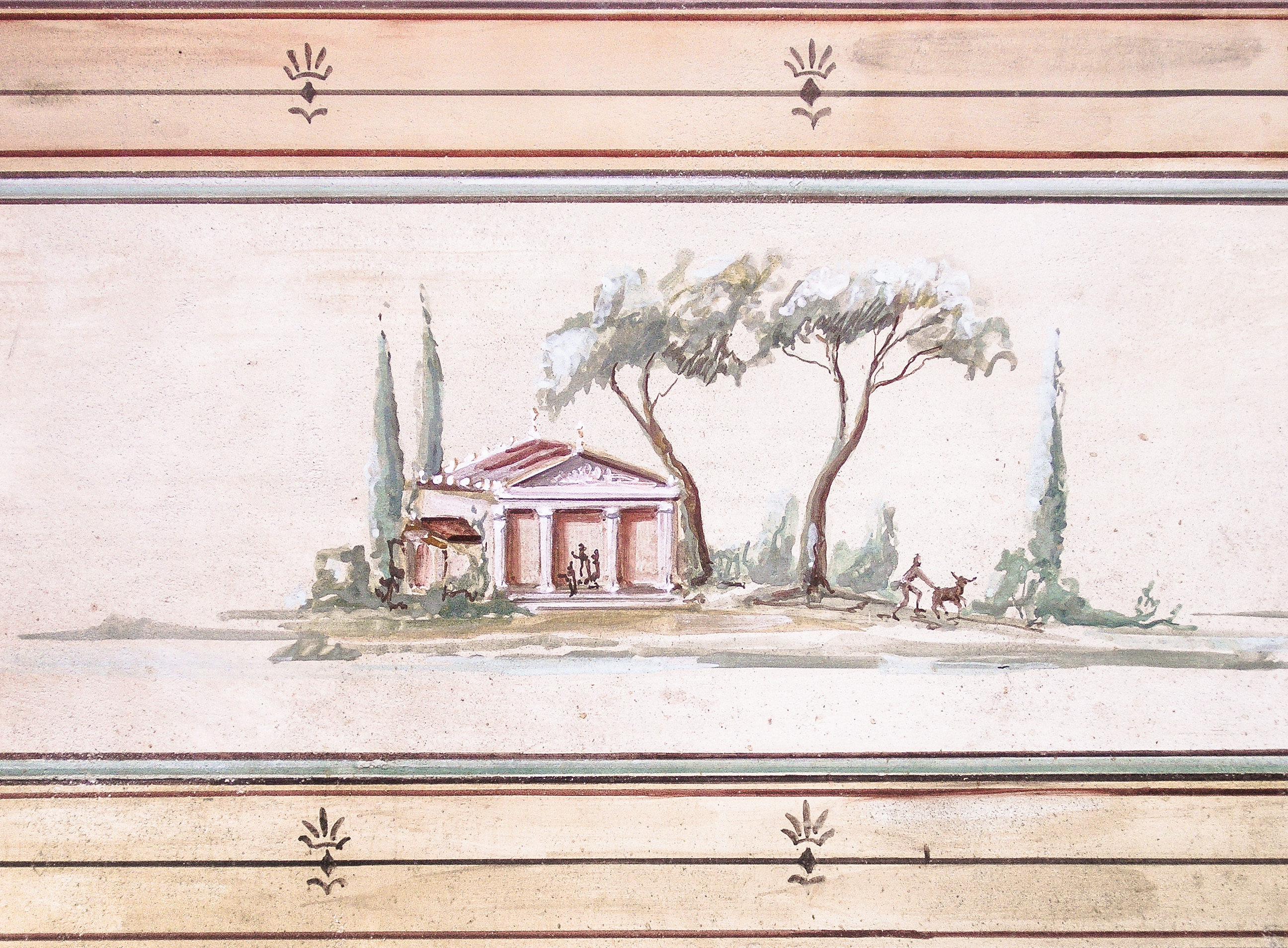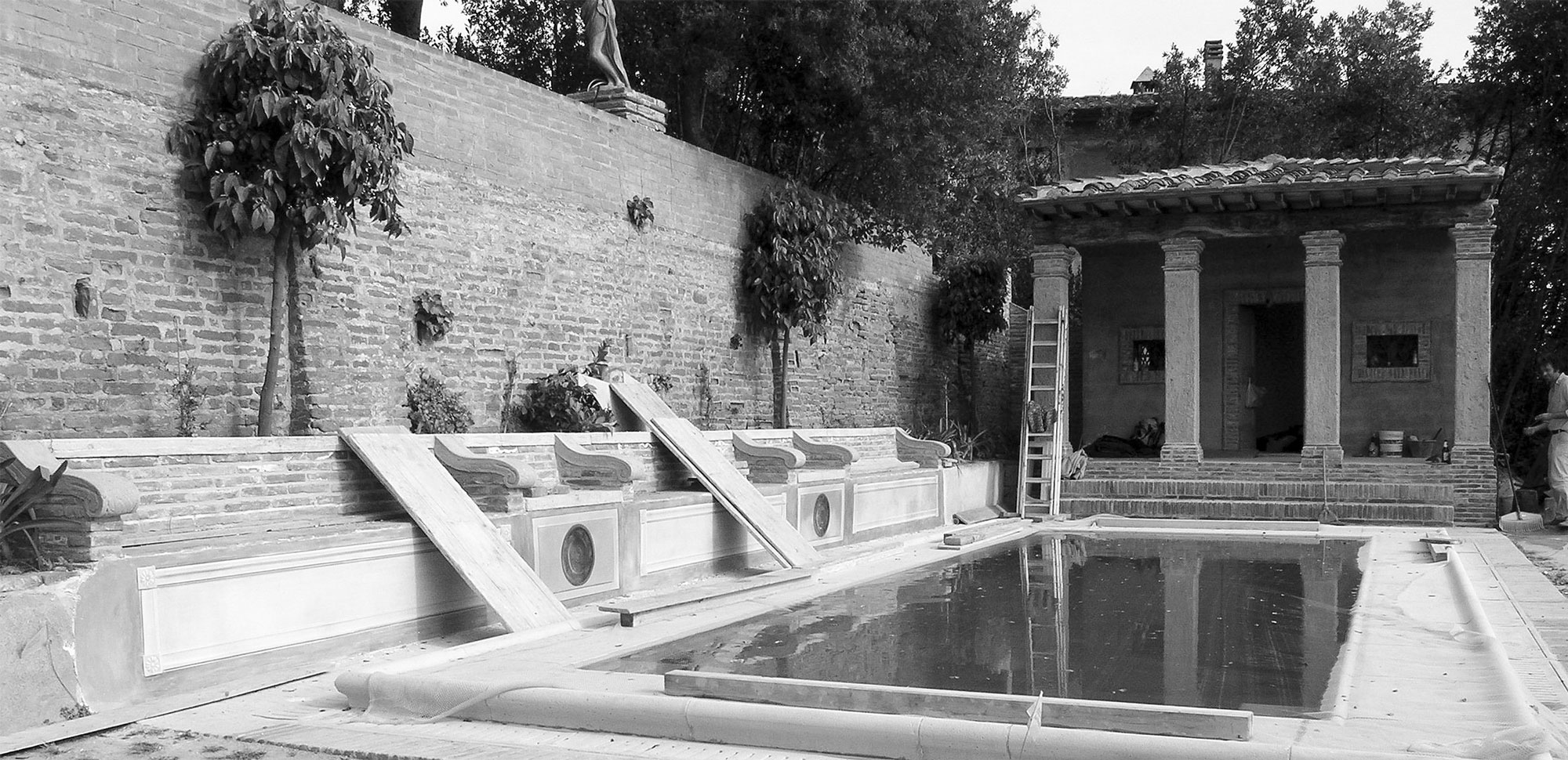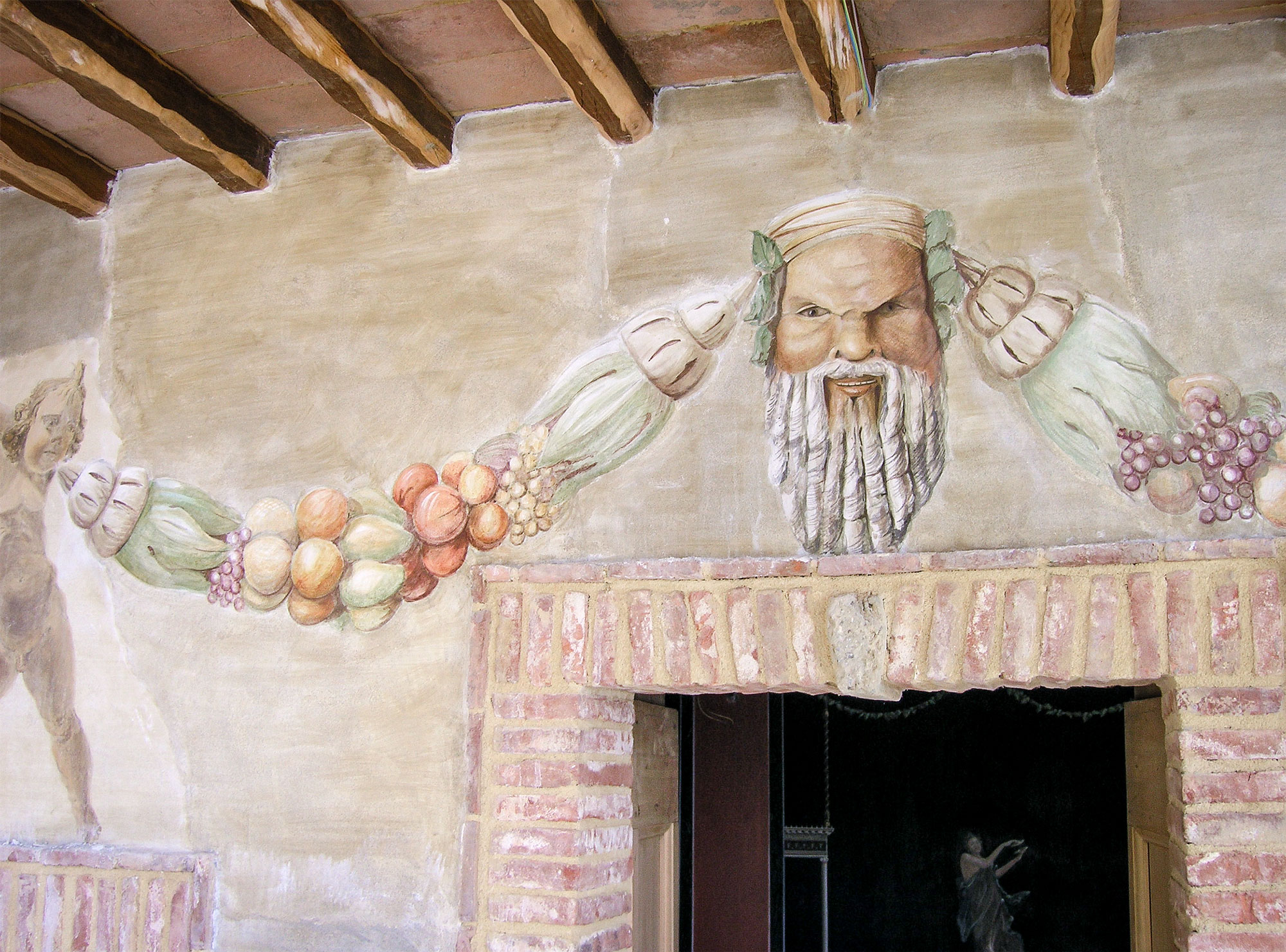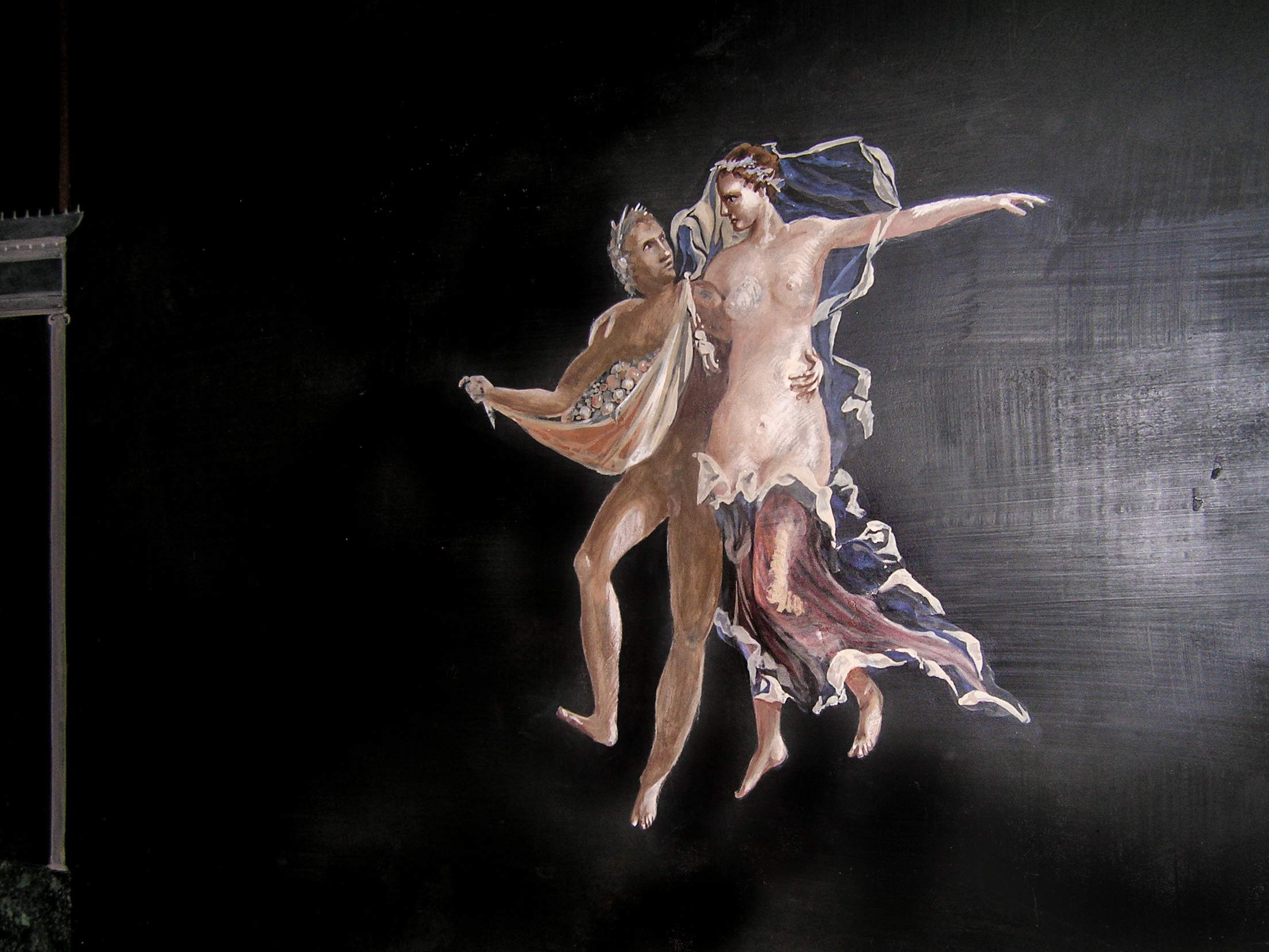Inside a pavilion in the gardens of a Tuscan villa, we frescoed black panels and red surrounds, I then painted Roman figures and decoration in a wax emulsion with coloured pigments. This is the method most likely used two thousand years ago by painters in Pompeii and Herculaneum.
Finer colours
If you look closely at the Roman originals, the background of these paintings nearly always consist of the more abundant earth pigments. The finer painted colours are in a wax emulsion, as described by Pliny the Elder in his Natural History. While painting with this encaustic technique it was remarkable how close I felt to my Roman predecessors.
Smooth and shiny
The wax emulsion on the walls was eventually heated up and burnished to a smooth and shiny finish. It seems like a very valid and durable method, provided that the walls are well made with bricks and lime mortar.
Very early
Tobias Bucher was the garden designer and he also painted the frescoed putti on the outside. Caterina Enni painted the frames and decoration. We had fantastic builders who came very early to put the lime plaster on the garden walls, the pots were individually thrown by ceramic artist Daniel Cavey.
